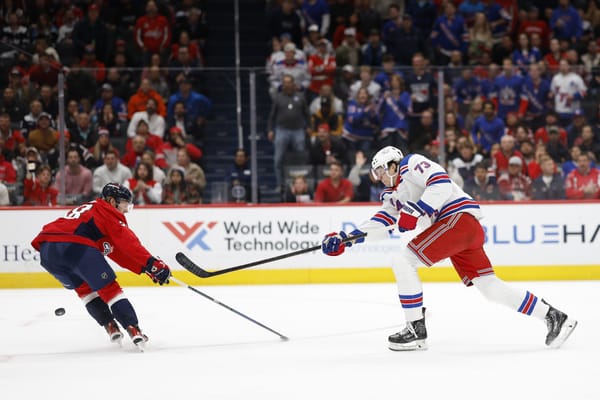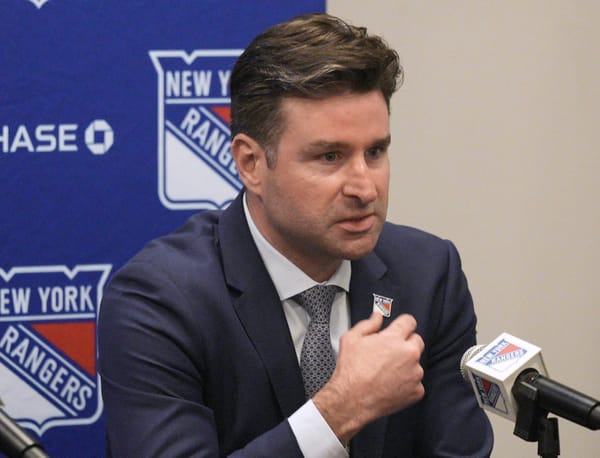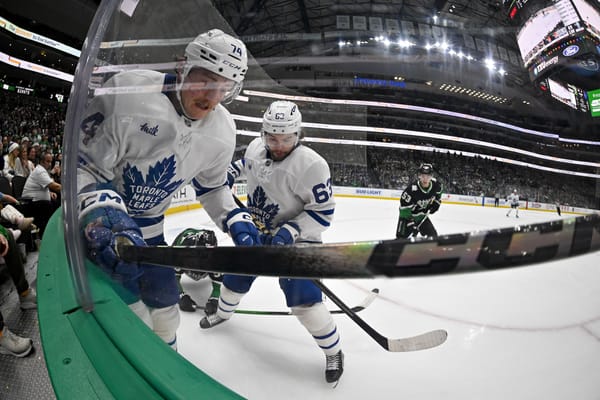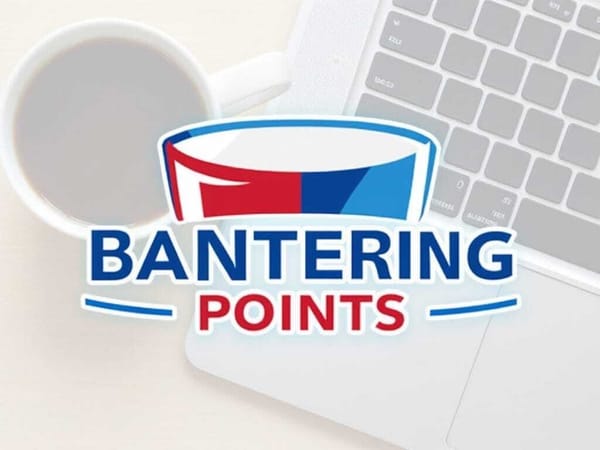The Rangers Need to Fix Their AHL Problems
The Hartford Wolf Pack blew a 2-0 lead on Tuesday, falling to the Bridgeport Sound Tigers in a shootout. This marked Hartford’s eighth-straight loss in what has been a dreadful season. The Wolf Pack rank dead last by points percentage in the AHL’s 16-team Eastern Conference and 29th out of 31 teams overall.
The AHL is a finicky league. NHL clubs heavily prioritize NHL performance (of course), and that’s often at the expense of its AHL club via call-ups and trades. Rosters consist of an eclectic group of players that changes practically every week. What’s more, the focus is on player development even if it sometimes comes at the expense of winning. With all of that chaos, a team can be forgiven if a season doesn’t quite work out.
The Wolf Pack are well beyond that point, though. Barring a monumental turnaround, this will be the fourth-straight season that they will fail to qualify for the AHL playoffs, and fifth out of the last six. If we are to take the Rangers at their word that a competitive NHL team is vital to the development of its young players, then that should be true in the AHL as well.
Whether because of that or a different reason, the young players in Hartford are not progressing as hoped. Lias Andersson and Tim Gettinger started the season well but have plateaued over the last few months. Ville Meskanen and Gabriel Fontaine have been just okay relative to expectations, but certainly not banging on the NHL’s door. Michael Lindqvist was bought out and departed for Sweden after just 16 average games. Beyond them, almost everyone has disappointed. Libor Hájek, Ryan Lindgren, and Brandon Crawley have all had an immensely difficult time on defense with only marginal improvements, while Ryan Gropp, Ty Ronning, and Sean Day have struggled so much that they’ve been demoted to the ECHL at various points in the season.
Therein lies a bigger issue for the Rangers. Wins and losses in the AHL are secondary to player development, and transitioning prospects from the AHL to the NHL has been a massive problem recently. Yes, some credit is deserved for the developments of Brady Skjei, J.T. Miller, and Filip Chytil. However, those are three players who would have almost certainly made the NHL regardless. They were sent to the AHL to figure out finishing touches. A bigger measure of successful AHL development is in turning those 50/50 prospects into capable NHLers. Excluding first-round picks, the most recently graduated player to spend a lengthy stint in Hartford was Jesper Fast in November 2014. We’ll see if Neal Pionk, Boo Nieves, and/or Vinni Lettieri can break that drought, but over four years without the AHL turning a single depth prospect into a legitimate NHLer is calamitous.
Where should blame be placed? This is an incredibly difficult question to answer because there’s so much going wrong that it’s hard to pinpoint causes versus effects.
Talent is perhaps part of the issue, at least. For the first few years this was excused while the Rangers were all-in for a Stanley Cup. The lack of draft picks can limit the talent available. Of the picks the Rangers did keep, one can point to a few underwhelming selections as well. Veterans are also integral to the success of AHL teams, and there have been some not-so-great players heavily depended on in Hartford.
However, the Rangers have sent some quality players to the AHL who then struggled in Hartford. Veteran AHLers like Joe Whitney, Brian Gibbons, and Justin Fontaine did not produce at the same level with Hartford as they have for other teams. Currently, former Olympian Bobby Butler is suffering that fate on this year’s squad.
And while some prospects’ failures may be due to lack of ability, there are others who quite clearly underachieved. The aforementioned Michael Lindqvist currently has 11 goals in 20 games for one of the top teams in Sweden. Malte Stromwall is fifth in points among all players in Finland’s Liiga. In 16-17, he mustered only six points in 42 games for Hartford. Forget about the NHL; why did these players struggle so heavily to make a difference in the AHL? This article has already mentioned the numerous prospects, many of whom the Rangers have publicly fixated on, who are struggling. It’s simply difficult to believe that none of the prospects who have come through the AHL over the last four years had NHL ability. At some point, the developmental process comes into question.
Is coaching the culprit? This was an issue for at least part of the time, no doubt, as Ken Gernander was not up for the job. He was removed from the position following the 2016-2017 season. Keith McCambridge, who has previously had some success coaching in the ECHL and AHL, was brought in. In my viewings of Hartford the last two seasons, they simply do not look organized on the ice. Is this because of him or in spite of him? This one is extremely difficult to judge from the periphery. The team bleeds shots, which is a carryover from Gernander’s time. This proved to be a major burden for the young goaltenders in Hartford’s net the last few years, and they’ve attempted to deal with that issue by adding highly qualified veterans in Marek Mazanec and Dustin Tokarski this season. They too have been unable to mitigate the floods.
Maybe more damning is that, according to the team’s official website, Hartford have just one assistant coach - former AHL enforcer Joey Mormina - whose prior coaching resume consists of being an assistant at Mercyhurst University for one season. This in itself does not automatically preclude someone from being a quality AHL coach, but the optics aren’t great.
Finally, culture is perhaps an issue, but this is a chicken-or-egg situation. Is losing creating problems in the locker room, or is a lack of team chemistry causing poor performance on the ice? Sources which Blueshirt Banter have spoken to in previous seasons have indicated that the environment in Hartford was turbulent, but that’s going to be true of any team stringing together too many losses. There could be underlying rot here, but sometimes a losing team is just frustrated that they are losing. Again, this was in seasons’ past, so it could be different this season.
Here is what is known, though. The Rangers curiously traded Cole Schneider, Hartford’s captain, on January 14th, for a notably inferior player in Connor Brickley. This incredibly marks the fourth-straight season in which Hartford’s captain has been traded midseason; Joe Whitney (2018), Mat Bodie (2017), and Ryan Bourque (2016) were the previous three. Again, the AHL is a peculiar league with many moving parts. Trades like this happen frequently without any scandal behind them. But four different captains getting shipped out in four-straight years? At minimum, this is worth a raised eyebrow.
Whatever the problems may be, and there are likely many, the Rangers need to fix them quickly. This would be an issue in any circumstances, but as the team rebuilds it’s now more urgent than ever. Lias Andersson and Libor Hajek are just a couple of the prospects currently in Hartford who are at a critical point in their developmental arches. There will be an influx of others in the next few years.
The shame of the current situation is that this is an area where the Rangers should be able to flex their muscles as one of the NHL’s superpowers. Toronto has done so superbly. They’ve heavily staffed their AHL coaching staff with some of the top minds in minor league hockey. They’ve put a lot of money and thought into picking out which veterans are on the team. They have curated plans for getting the most out of their young, talented prospects. The results speak for themselves. The Marlies won the AHL’s Calder Cup last season and have been arguably the best AHL team over the last three years. Andreas Johnsson, Zach Hyman, Travis Dermott, Connor Brown, Frederik Gauthier, Justin Holl, and Garret Sparks have all come through the AHL and are now on Toronto’s roster. That’s an incredible number of former depth prospects who have been developed into NHLers for a team trying to win the Stanley Cup.
The Rangers have taken small steps to follow suit. Blueshirt Banter wrote last season about how the Rangers had fallen behind the rest of the league in terms of providing goaltending coaching at the minor league level.
Related
Lack of Coaching is Hurting Rangers’ Goaltender Development
Coincidence or not, they rectified that situation this summer by making Erik Raymond Hartford’s full-time AHL goaltending coach and adding Jeff Malcolm as a goaltending consultant. The ECHL had also been problematic in years’ past. This summer, the Rangers switched affiliates and partnered up with former NHLer Daniel Briere’s Maine Mariners. Per a source, the ECHL team’s atmosphere has improved significantly and the coaching has become more geared toward development. These are all good moves which should help improve the AHL situation going forward.
Rangers’ Assistant General Manager Chris Drury was put in charge of the Wolf Pack in May of 2017. It’s impossible to blame him for the problems that preceded him, and at least some that have continued since are likely residual from that time. It’s going to be up to him, among others within the organization, to abruptly put an end to their AHL affiliate’s woes and get back on track. Doing so will go a long way in determining how quickly and successfully the Rangers are able to rebuild at the NHL level.




